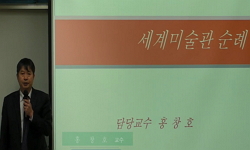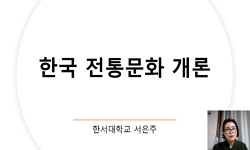This article intends to illuminate the characteristics and significance of the Wangochonchukkukchon, the records of experiences of travel to Chonchuk --the old name of India-- by Hyecho(704-780), a Buddhist monk of Silla. As Hyecho"s ...
http://chineseinput.net/에서 pinyin(병음)방식으로 중국어를 변환할 수 있습니다.
변환된 중국어를 복사하여 사용하시면 됩니다.
- 中文 을 입력하시려면 zhongwen을 입력하시고 space를누르시면됩니다.
- 北京 을 입력하시려면 beijing을 입력하시고 space를 누르시면 됩니다.
https://www.riss.kr/link?id=A76440489
- 저자
- 발행기관
- 학술지명
- 권호사항
-
발행연도
2008
-
작성언어
-
-
주제어
혜초 ; 왕오천축국전 ; 기행문학 ; 순례 ; 통과의례 ; 시삽입형 혼합담론 ; 법현 ; 의정 ; 불국기 ; 대당서역구법고승전 ; 남해기귀내법전 ; Hyecho ; Wangochonchukkukchon ; travel literature ; pilgrimage ; rite of passage ; poem-inserted type of mixed-style texts ; Peophyun ; Pulgukki ; Uijeong ; Taedang seoyuk kubeop koseungchon ; Namhaegigwinae peopchon
-
KDC
810
-
등재정보
KCI등재
-
자료형태
학술저널
- 발행기관 URL
-
수록면
55-86(32쪽)
- 제공처
-
0
상세조회 -
0
다운로드
부가정보
다국어 초록 (Multilingual Abstract)
This article intends to illuminate the characteristics and significance of the Wangochonchukkukchon, the records of experiences of travel to Chonchuk --the old name of India-- by Hyecho(704-780), a Buddhist monk of Silla. As Hyecho"s travel to India and its records go, there are two notable points which will be focused on in this article. One is that Hyecho"s travel was done at the age of twenty which was young age compared to other monks" cases, and the other is that the Wangochonchukkukchon is differentiated from other travel literatures by Buddhists monks in including some poems within the text.<BR> Unlike other studies on the Wangochonchukkukchon which have mainly been established around bibliographical approach, this article is distinctive in employing a comparative method which covers other similar texts by Buddhist monks such as the Pulgukki by Peophyun, the Taedang seoyuk kubeop koseungchon and the Namhaegigwinae peopchon by Uijeong, the Taedang seoyukki by Hyunjang, and the Iptang kubeop sunnye hanggi by Japanese monk Yennin.<BR> When we classify travel literature, according to the purpose of the travel such as pilgrimage, sightseeing, and business trip, the Wangochonchukkukchon falls into the category of pilgrimage travel literature. Since Chonchuk was conceived of to be the sacred place by Buddhists which Buddha had been born, achieved Enlightenment, and preached on the four holy truth--birth, aging, illness, death--, it can be characterized by a form of pilgrimage to visit holy places and worship the Buddhist relics in India, It, however, was a risky attempt fraught with a quantity of difficulties and dangers to make a trip to India in the 8th century. The experience of pilgrimage to India, which signified an accomplishment of a holy mission, brought a tremendous changes to Hyecho both in inner and in outer life. On one hand he became to form his self identity as a real Buddhist monk, and on the other hand he could consolidate his religious standing in the Tang period. In other words, it can be said that the pilgrimage to India functioned the rite of passage to him.<BR> As for the writing style of the Wangochonchukkukchon, it can be categorized as ‘poem-inserted type’ among various types of the mixed-style texts: those which prose and verse are mixed in a text. This article considers this characteristic of the Wangochonchukkukchon to be one influenced by Uijeong"s travel literature.
목차 (Table of Contents)
- 1. 머리말
2. 紀行文學으로서의 『왕오천축국전』
3. 通過儀禮로서의 天竺 旅行
4. 『왕오천축국전』의 서술방식
5. 맺음말
〈참고문헌〉
[Abstract]
- 1. 머리말
2. 紀行文學으로서의 『왕오천축국전』
3. 通過儀禮로서의 天竺 旅行
4. 『왕오천축국전』의 서술방식
5. 맺음말
〈참고문헌〉
[Abstract]
동일학술지(권/호) 다른 논문
-
- 한국언어문학회
- 이동순(Lee Dongsoon)
- 2008
- KCI등재
-
창작론적 비평 방법의 연구(2) - 플롯 구성을 중심으로
- 한국언어문학회
- 이미란(Lee Miran)
- 2008
- KCI등재
-
1950년대 북한 아동문학교양장(場) 연구 - 조선작가동맹 중앙위원회 기관지 『아동문학』을 중심으로
- 한국언어문학회
- 이영미(Lee Youngmi)
- 2008
- KCI등재
-
- 한국언어문학회
- 윤일수(Yoon Ilsoo)
- 2008
- KCI등재





 스콜라
스콜라






